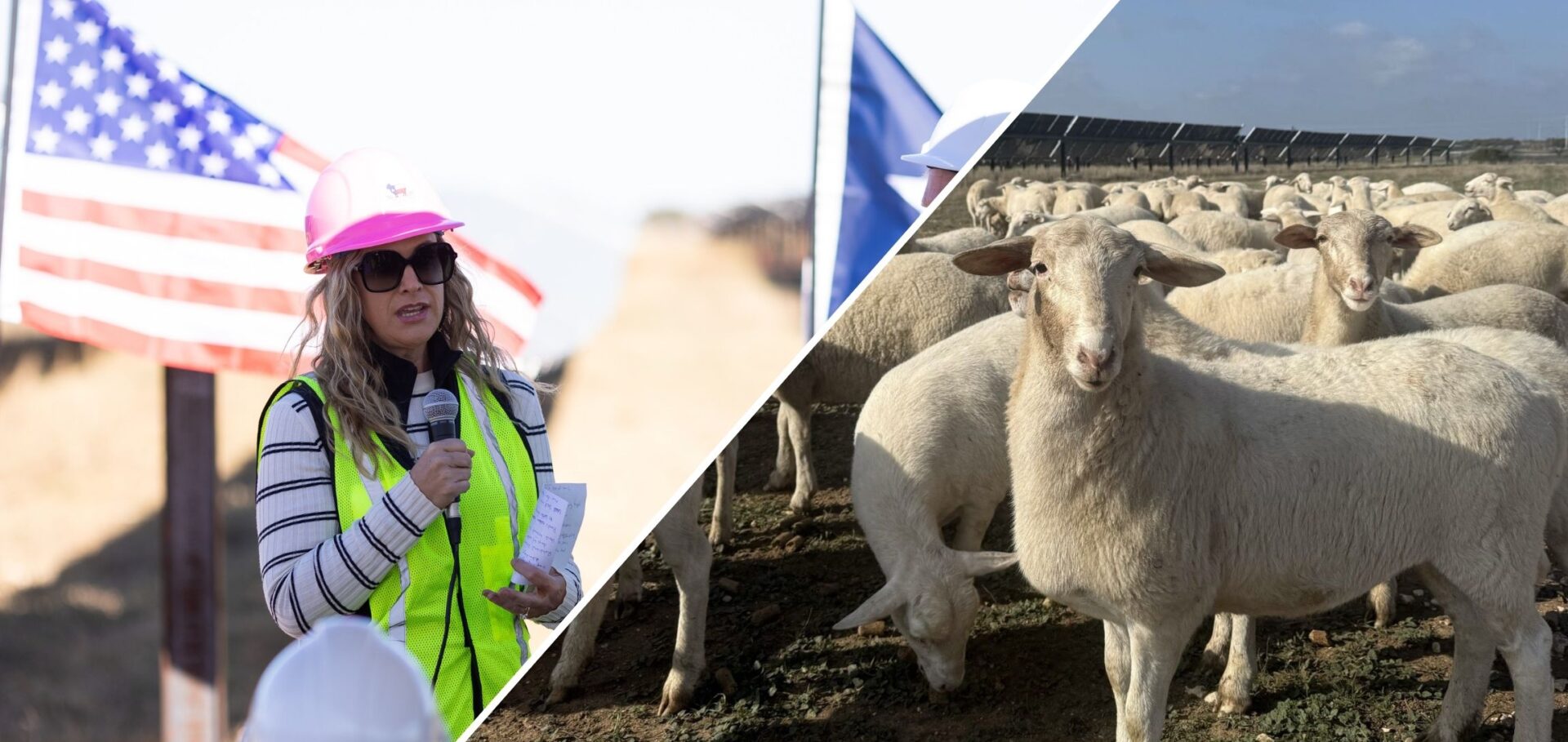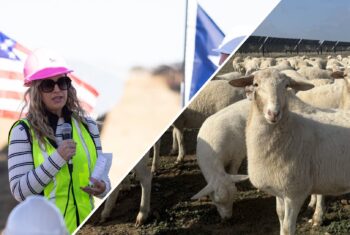Green Pastures: A Lambscaping Conversation with Sara Brazelton

Whenever Scout builds a project, its landowners represent a central part of its story and its legacy. There are few better examples of this than the Linn Family's role in the development and operation of Scout's recently commissioned Markum Solar Farm in central Texas. The Linns not only began the initial development of the solar project; they have seamlessly weaved their long-standing agricultural legacy into Markum's future. Through the establishment of Lonestar Lambscaping LLC, the Linns are managing the site's vegetation through a natural approach, using their sheep to graze the site.
To expand on the process in her own words, we talked with Sara Brazelton of the Linn Family to hear more about the process of utilizing sheep to graze solar sites and to discuss her family's impressive solar energy journey.
The story of Markum Solar Farm is truly a Linn Family story. What led your family to embark on this journey that saw you transform your land and business into something brand new?
SB: We had a vision for a legacy ranch for multiple family generations but weren't sure how to accomplish that goal. Then our family began receiving leasing letters from solar companies to lease the land for our cattle ranch in 2018. We have a family business that deals in investments, and our Dad proposed that we could potentially develop the project on our own. How hard could it be? Turns out it is pretty hard, and has a lot of steps. Luckily, my sister cold-called a great contact in the industry, Bradley Construction Management, now Bureau Veritas, and they had the vision that this could be a viable project due to the location of the land, the proximity of the substation, and the extra capacity in our overhead line. We also had another consultant that helped us create a package that would be something that was attractive to solar developers. For our family, the value we saw was that we could keep the land in our family and be a part of a new wave of renewable power in Texas.
What parts of the process did you find the most exciting or rewarding?
SB: As a family, we love learning about new markets and solar was no exception. We were lucky enough to attend several solar conferences and we loved learning about all the new technology in the solar industry. However, we would have to say the best part has been the people we have been lucky enough to work with. Everyone in the industry is so knowledgeable and so passionate about renewables, it has been a joy with every team we have been lucky enough to have.
The Linn Family will help to manage the solar farm's vegetation by using your sheep to graze between and underneath the panels. What was the decision-making process behind pursuing this exciting and relatively cutting-edge effort?
SB: The Linn Family has been in agriculture for over 100 years, and both my parents were raised on farms in Iowa. Markum Ranch had been a historical cattle operation, and we had a genetic line of herd sires focused on grass-fed beef we bred on the ranch. Our family considers ourselves to be stewards of the land and we used practices like rotational grazing and regenerative soil health methods. Once we saw the concept of agrivoltaics at a solar conference, my sister really championed the idea of keeping the ranch in agriculture. Agrivoltaics is a bridge for our ranch to be part of the renewable energy movement and still be stewards of our land through responsible agriculture.
What does it take to run a sheep grazing business for a utility-scale solar farm? What are some facets to the practice that might surprise people?
SB: The first part of running a sheep grazing business is planning a solar farm for sheep versus traditional mowing. We were lucky that Scout Clean Energy has been a great partner, and we were able to work together to make sure the ranch is set up for sheep. So we were able to work with them to plant a seed mix that works for the sheep and also fits within the height requirement for solar farms. We also were able to install water lines and electric fencing for rotational grazing. They have great staff, and we always have a direct open line of communication with Scout. One surprising fact is that in hot climates like Texas, sheep actually fare better in solar farms because the panels provide shade in hot months and the grasses under the panels grow better.
What advice would you offer to landowners or businesses considering renewable energy as an option for their land?
SB: For us it was a great option because it allows us to pass on our ranch to the next generation. As we went through the process, we interviewed several companies at each step and were very thoughtful about what we wanted in a partner. For all the steps, we chose companies that fit with our goals and have had great experiences. We value having partners that are knowledgeable and have open lines of communication. There are a lot of steps in getting a solar farm completed and both the Linn Family and Scout had to work closely to make the project come to fruition. Scout was also open to letting us propose sheep-scaping and it was valuable to our family that they saw the benefit of being able to keep the land in agriculture both as a benefit for the land and for the project itself.
What plans, if any, do your family have to expand on the success of Markum?
SB: Right now, we are finishing up the infrastructure at Markum Solar and sheep arrived at the end of January 2025. In the future we hope to be able to supply sheep to other solar sheep operations. There is also a possibility to expand with other solar projects if it is the right fit for the Linn Family and solar owners like Scout Clean Energy.


